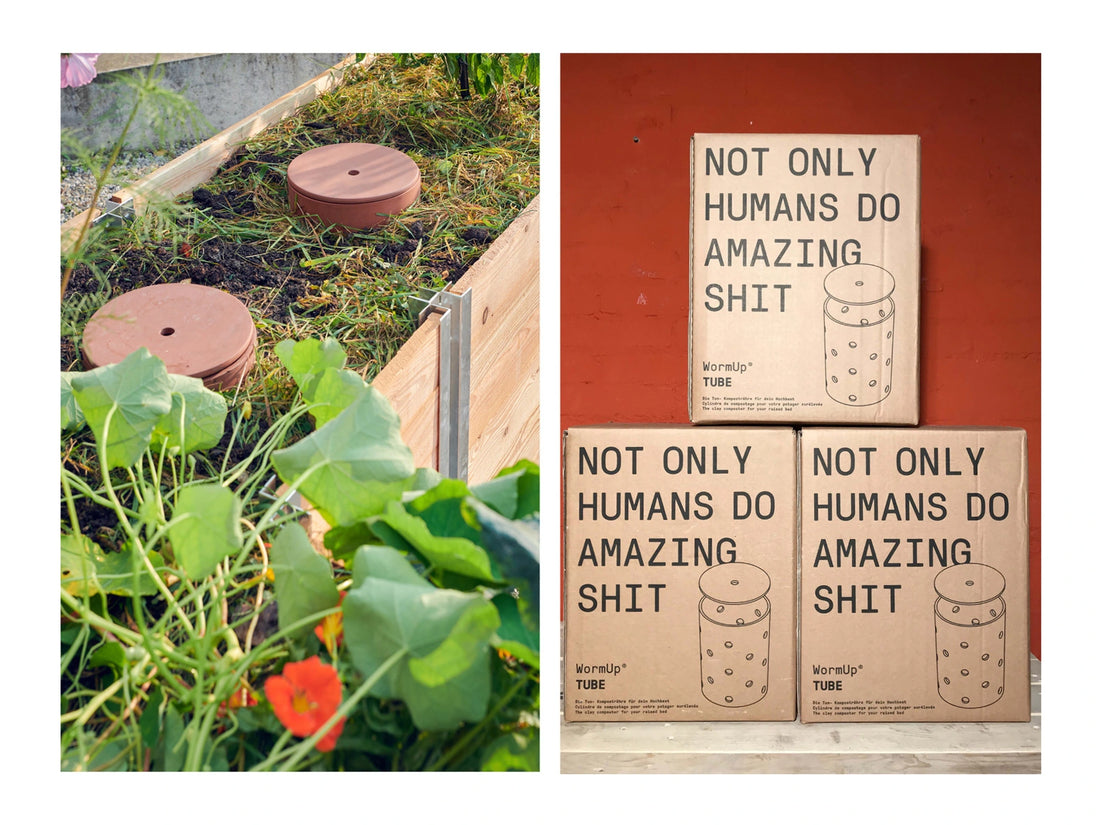Regularly check if everything is running smoothly in your WormUp TUBE by observing your composter with all your senses: Watch the nimble worms hide from the light, feel the moisture, temperature, and crumbly structure, smell the earthy scent of the worm humus, and listen to the comforting smacking of the worms ;).
Checklist
Worms |
|
|
|
You should find the worms under the layer of waste, moving around and not clumped together. |
|
|
When you lift the lid, the worms hide from the light, and if you spray them with a spray bottle, they quickly retreat. |
Compost Quality |
|
|
|
The top layer of fresh/undegraded waste is no thicker than 2-5 cm. |
|
|
It smells like earth and slightly like what you have just fed (e.g., banana or onion). If it smells bad, something is wrong, likely due to insufficient oxygen in the system. |
|
|
The worm compost is pleasantly loose, crumbly, and you can see worm castings. |
|
|
The compost is pleasantly moist like a wrung-out sponge or like garden soil a few hours after rain. The lower tiers also have a pleasant moisture level. |
Temperature |
|
|
|
The worm humus is "hand warm." If the compost is significantly warmer than the surrounding temperature, you probably have given too much or too much protein-rich food. |
Co-inhabitants |
|
|
|
Various organisms are present, but not in extreme amounts. Some Co-inhabitants can be indicators of how the system is running. |
If any of these indicators show that things aren't going smoothly, then take action or contact us. We're always here for you if you have questions!
Immediate Measures
Over time, you will become an expert on your little ecosystem. You will immediately notice when the system is out of balance, and you will sense whether you need to take action or simply wait for the system to balance itself out again.
The most effective remedies for almost all worm composting problems
- Reduce or pause feeding: You can detect overfeeding by the smell. Learn with patience how much waste your worms can process. It might not always be the same amount.
- Regulate moisture:
- If the compost is too wet, add dry structural material and temporarily reduce the amount of feed.
- If the compost is too dry, add water. Moisten the surface with a spray bottle. Note: If the composter is very dry, it requires larger amounts of water (2-3dl).
- Play mole occasionally: At some point, you will feel the urge to stick your hands in the composter and thoroughly mix everything. This adds extra oxygen to the system and gives you a feel for the condition of your compost.
- Mix in moist soil (2-3 liters, e.g., garden soil)
- Sprinkle minerals over the individual elements: Mineral mix or rock dust
What to do if the compost is mushy and stinks?
- Mix in structural material or soil to get oxygen back into the system. Do not water anymore.
- Remove or otherwise dispose of rotten, mushy, or hot spots, e.g., bury in the garden/raised bed.

